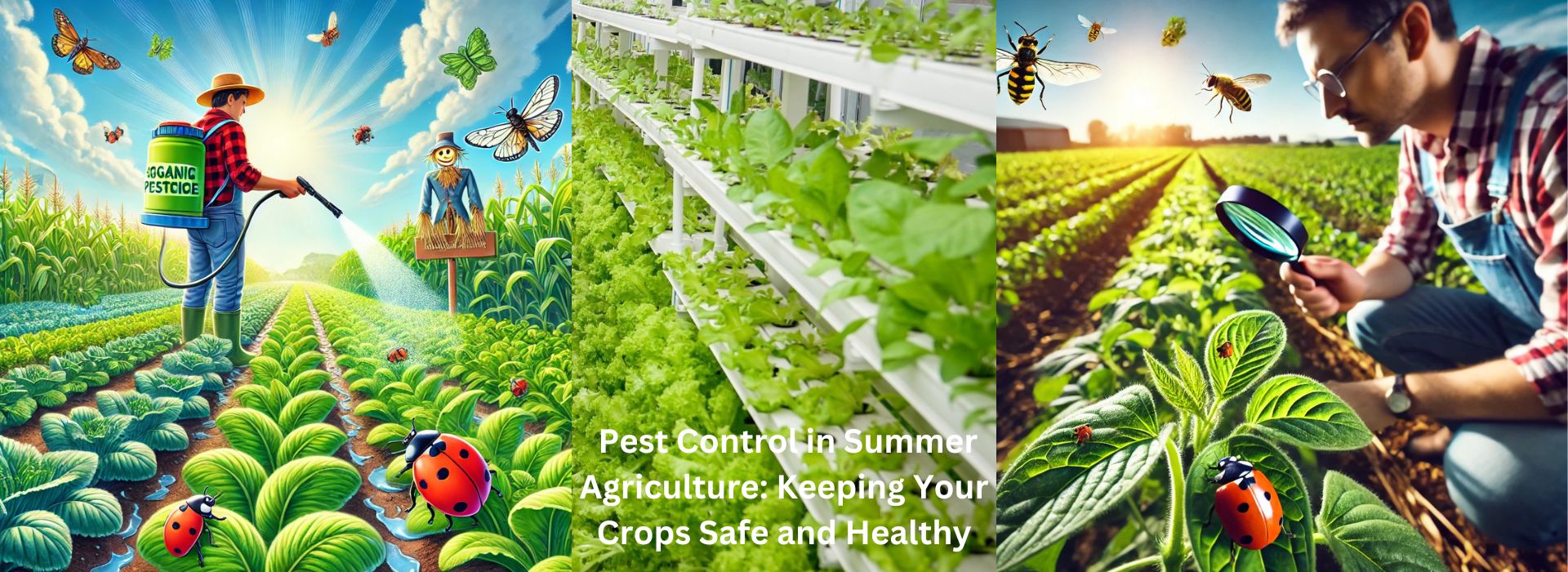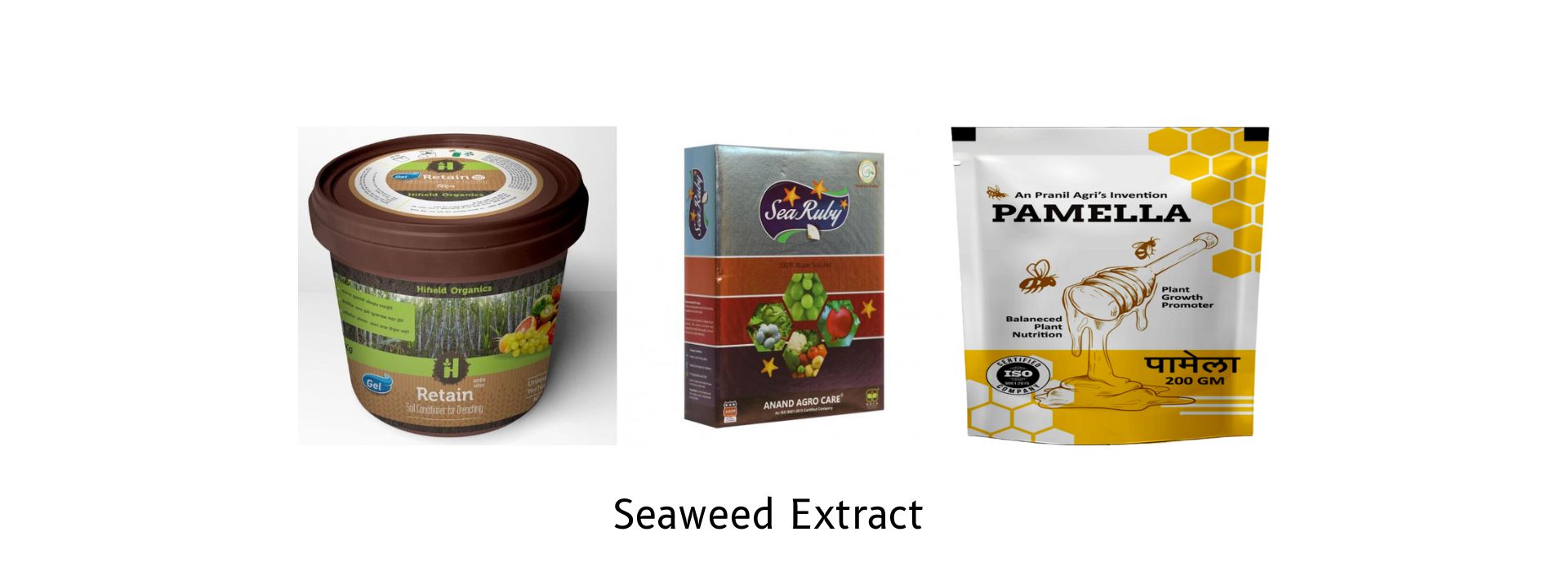Pest Control in Summer Agriculture: Keeping Your Crops Safe and Healthy
February 18, 2025Pest Control in
Summer Agriculture: Keeping Your Crops Safe and Healthy
Summer is a crucial season for
agriculture, offering optimal growth conditions for crops. However, with rising
temperatures and increased humidity, pests also thrive, posing significant
threats to crops. From insects like aphids and whiteflies to fungal diseases,
summer pests can reduce yields and affect crop quality. Effective pest control
strategies are essential to protect crops and ensure a healthy harvest.
In this blog, we will explore the best
practices for pest control in summer agriculture, focusing on
sustainable and effective methods to keep your crops safe and productive.
1. Understanding
Common Summer Pests
Different pests become more active
during summer, feeding on plants and causing extensive damage. Here are some of
the most common summer pests that farmers need to watch out for:
Insects and
Mites:
- Aphids – Sap-sucking insects that weaken plants and transmit
diseases.
- Whiteflies – Small, flying insects that cause leaf
yellowing and spread viral infections.
- Spider Mites – Thrive in hot, dry weather, causing
speckled leaves and plant stress.
- Thrips – Tiny pests that distort leaves and flowers, reducing crop
yield.
- Grasshoppers – Eat large amounts of leaves, leading
to defoliation.
Fungal and
Bacterial Diseases:
- Powdery Mildew – White, powdery spots on leaves, common
in warm conditions.
- Rust Disease – Causes reddish-brown spots on leaves,
reducing plant health.
- Bacterial Wilt – Affects vegetables like cucumbers and
tomatoes, causing sudden wilting.
2. Preventive
Measures for Pest Control
Crop Rotation and
Companion Planting
- Rotate crops each season to break the
life cycle of pests.
- Plant companion crops such as
marigolds, basil, and garlic, which naturally repel insects.
Soil and Water
Management
- Keep the soil healthy by adding compost
and organic matter, making plants more resistant to pests.
- Avoid overwatering, as excessive moisture
attracts fungal diseases.
- Use Mulching to regulate soil temperature and prevent weed growth, which can harbor pests.
Physical Barriers
and Traps
- Install row covers or fine mesh
nets to protect plants from flying insects.
- Use sticky traps to capture
whiteflies, aphids, and thrips.
- Place pheromone traps for early pest
detection and monitoring.
3. Natural and
Organic Pest Control Methods
Neem Oil and
Botanical Sprays
Neem oil is an effective organic
pesticide that disrupts insect growth and feeding. Spraying diluted neem oil
can control aphids, whiteflies, and mites without harming beneficial insects.
Biological Pest
Control
Introduce beneficial insects such as:
- Ladybugs – Natural predators of aphids.
- Lacewings – Feed on caterpillars and whiteflies.
- Praying Mantises – Consume a wide variety of harmful
pests.
Diatomaceous
Earth
Sprinkling diatomaceous earth
around plants creates a barrier that dehydrates and kills insects like ants and
beetles.
Homemade Pest
Repellents
- Garlic and Chili Spray – A natural deterrent for insects.
- Soap Spray – A mixture of mild soap and water can
help control aphids and mites.
4. Sustainable
Chemical Pest Control
While organic methods are ideal, some
situations require chemical pest control. When using pesticides:
- Choose eco-friendly insecticides
that target specific pests without harming pollinators.
- Apply pesticides during early morning or
late evening to avoid harming bees and butterflies.
- Use integrated pest management (IPM)
to combine chemical and natural control methods, reducing chemical
dependence.
5. Monitoring and
Early Detection
Regular field inspections help in
early pest detection and quick intervention.
- Check leaves (especially undersides) for eggs,
larvae, or insect damage.
- Use yellow sticky traps to monitor
flying insect populations.
- Keep detailed records of pest activity to
plan future prevention strategies.
6. Post-Harvest
Pest Control
Even after harvesting, pests can cause
damage. To prevent post-harvest infestations:
- Store crops in cool, dry conditions
to prevent fungal growth.
- Use airtight containers to keep
stored grains and seeds pest-free.
- Implement fumigation or natural
repellents like neem leaves in storage areas.
Conclusion: A
Holistic Approach to Summer Pest Control
Summer agriculture comes with the
challenge of increased pest activity, but with preventive measures, organic
solutions, and sustainable chemical control, farmers can protect their
crops effectively. By adopting integrated pest management (IPM) and
staying vigilant with regular field inspections, farmers can reduce pest damage
while maintaining a healthy and productive farm.
A proactive approach to pest control
will not only improve crop yields but also contribute to long-term soil health
and sustainability.
At krishibazaar.in, you
can find and buy various agricultural products. For agricultural guidance on
selecting the most suitable products for your crops, please contact or WhatsApp
at +917887880887






Guest reviews
No reviews found for this Blog